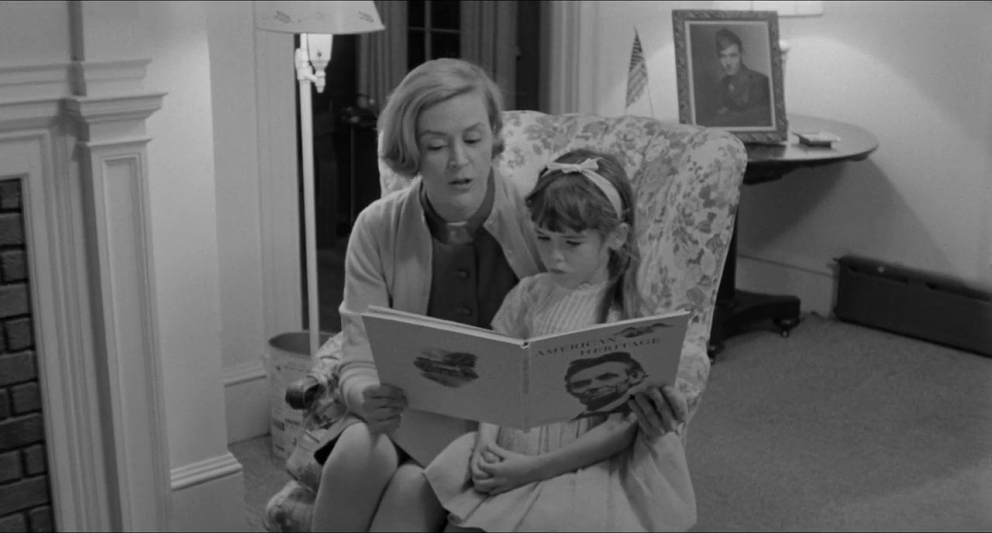“Dear Martha, I would like to shout my love for you to the world………You and you alone are the one and only woman I have ever loved” says Raymond Fernandez in his letter to Martha Beck at the end of Leonard Kastle’s The Honeymoon Killers (1969).
Those who haven’t heard about Martha and Ray might think of it as a soulful love story, and they may not be totally wrong. In a way, it is a love story, but a one where a lot of innocent souls were reaped. “Honeymoon Killers” is based on the true story of American Serial killer couples – Martha and Ray, known as ‘Lonely Heart Killers’ for choosing their victims through ‘lonely hearts’ ads (with the rise of WWW, we now call it as ‘online dating’). Between 1947 and 1949, the couples were alleged to have murdered 20 women (although only few were proven in court). They were eventually caught and executed by electric chair in 1951.
The late 1960’s was the era when Hollywood witnessed stylistic shifts (one that employed gritty realism). Some of the films of this era concentrated more on the visceral impact and tried to diffuse a sense of dread rather than worrying about characterized style of film-making. Penn’s “Bonnie and Clyde” & Richard Brooks’ “In Cold Blood” (both released in 1967) were the couple of pioneer works of this period (groundbreaking works of true-crime genre) which circumvented a whole lot of Hollywood film-making conventions. Both the films could be deemed polar opposite, in its treatment of the real-life material. While, “Bonnie and Clyde” used the characters’ frivolity and willful disposition to elevate their status to that of a superbly constructed myth, “In Cold Blood” embraced documentary aesthetics and tight close-ups to acquire the sense of terror. “The Honeymoon Killers” more akin to “In Cold Blood” than Arthur Penn’s crime masterpiece. It is genuinely disturbing as dives into the underbelly of a picturesque American society.
Martha Beck (Shirley Stoler) is a lonely & overweight woman, living with her senile mother in Mobile, Alabama. She works as a head nurse and finds her solace only in eating a handful of candies. Martha always wears a mask of menace as if expecting that she would be frowned upon. She is aching for a companion, but gets furious when her friend places an ad in ‘Aunt Carrie’s Friendship Club’. Soon, Martha engages in correspondence with Raymond Fernandez (Tony Lo Bianco), a conman, who convinces Martha that she is the ‘one’ he is waiting for all his life. But, she discovers that Ray’s job is to romance lonely ladies and exploit them for money. Martha tracks him down and in order to cherish Ray’s love, she opts to be his partner in crime. They plot to con wealthy women around the nation posing as brother and sister. Gradually, their simple cons turn into gruesome murders.
“The Honeymoon Killers” was meant to be a directing vehicle for Martin Scorsese, who left the project due to creative differences. He was replaced by American opera composer Leonard Kastle, who also did his own research for the script. The washed-out black-and-white cinematography and the documentary aesthetics are the chief strengths of the movie. The way Kastle uses abstract imagery to evoke thought-provoking questions (for example, the image of Jesus) and the manner he uses the close-ups shots would have definitely given him the label ‘auteur’, if only he had chosen to make such evocative works (but Kastle made only one film). The director at no point romanticizes the primary characters, but still he employs a strangely empathetic viewpoint at certain junctures. This sense of empathy is what makes us coil in revulsion when the unspeakable atrocities unfold.
Spoilers Ahead
“Honeymoon Killers” is one of the earlier films to depict violence in a unflinching, truly disturbing manner. The sequence, where Martha takes a hammer to the old widow Janet’s head, while Ray strangles the woman with her pantyhose, depicts the visceral shock of their unpardonable crime (Shohei Immamura’s “Vengeance is Mine”, released in 1979, conveyed similar kind of shock). At a single instance, the film-maker even puts us in the victim’s viewpoint, making us to bear the emotional brunt of the evil act (in the extreme close-up scene involving Delphine). The ugly depictions of violence (with no dramatic build-up) also offer a perfect counterpoint to all those films, which depict the act of aggression as something poetic. Director Kastle also knows when to keep the violence off-screen and still create that same amount of shock (in the scene when Martha takes a little girl to the cellar to drown her in a basin).
Whenever the couples are deep into their con-game, Kastle uses close-up or medium-shots. Their lies and the resultant reactions from their victims makes us clearly see the dry irony in the proceedings, while also imbuing a nauseating feeling. There’s no real documentation over how the victims behaved in real life. So, director Kastle takes liberty in depicting them. Except for Janet and Delphine, the other victim characters often come off as caricatures. It might be deliberate as Kastle may have been using those unscathed women characters to critique at the American societal values or materialism. Those who are obsessed with accuracy would also annoyed by Kastle’s decision to leave out plenty of facts about Martha and Ray (like how they both had children from previous relationships, whom they abandoned or Ray’s diagnosis for psychosis or Beck’s ruined childhood).
If you want a conventional approach to the real events, you could see Mexican film-maker Arturo Ripstein’s “Deep Crimson” (1996, which is also as macabre and disturbing as this one). Director Leonard Kastle is more interested in the environment that spawned these disillusioned killers and their perspective on love. The story of ‘Lonely Hearts Killers’ was also dealt in two other films: “Lonely Hearts” (2006), which was beautifully photographed, but was mundane in its treatment (casting Salma Hayek in the role of Martha was enough to disengage); Belgian film-maker Fabrice Du Welz’s “Alleluia” (2014), which imbues ‘New French Extremity’ style (for ex: “Inside”, “Martyrs”, etc) into the treatment of its characters. “Alleluia” is the most auteuristic & surrealistic take on the tale, although it treats the character of Martha as a monstrous, psychotic killer. “Alleluia” is more interested in the dominance and submission aspect of the main characters and so its version of Martha is hyper-violent. All these versions really make me ponder over the great performance of Shirley Stoler in “Honeymoon Killers”. She remains calm, dispassionate and showcases emotional detachment while performing the gruesome acts, which makes everything even more unsettling. Many critics also note the irony on how this menacing presentation of Martha only brought Stoler (for most part of her career) small parts of playing sapphic prison guards and brothel madames.
“The Honeymoon Killers” (108 minutes) is a cult classic that offers a remarkably unsettling movie experience. Its delirious depiction of a permissive society would definitely be hardwired into our memory.





